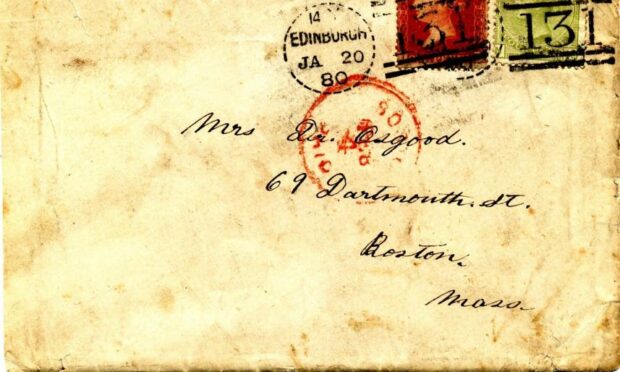It has passed without comment, but this is the 150th anniversary of the start of Dundee’s first Tay Bridge. Construction on the crossing began in 1871.
Although designed by Sir Thomas Bouch, who endured most of the criticism when it collapsed at the end of 1879, the bridge was built by Hopkin Gilkes & Co, a Middlesbrough company.
Several items survived the tragedy, with a poignant collection of memorabilia at The McManus.
A letter describing the scenes
Remarkably, some artifacts continue (forgive the phrase) to surface.
Entering a local collection in recent weeks was a letter describing the sad scenes shortly after the engine and carriages had toppled into the Tay.
This was sent from Edinburgh to Boston, USA, early in January 1880 and describes the immediate aftermath of the disaster. Its envelope carries an Edinburgh date stamp for January 20, 1880.
The accompanying letter was sent from an Annie White of 63 Grassmarket to a Mrs Osgood in Boston, an excerpt reading:
“I had a good view of the Broken Bridge”
“I was at Dundee the Saturday after the Tay Bridge disaster and I had a good view of the Broken Bridge as you have to go across the Tay now by Boat. There is only 28 Bodies got and they think that they will not get very many more. They think that they are carried away out to sea…”
A recent survey by postal historians indicated that just 20 envelopes survive from mailbags recovered in the estuary from the doomed train.
With most of these items in institutions or major private collections, they rarely come to auction. Surprisingly uncommon, however, are letters providing eyewitness accounts of the awful aftershock.










